Siemon Allen is a South African artist who currently lives and works in the United States. He received his MFA from Natal Technikon (now Durban Institute of Technology) and was a founding member of FLAT gallery, an artist’s initiative in Durban, South Africa. In 2010, he was invited by the gordonschachatcollection as the featured artist at the Johannesburg Art Fair. That same year, he presented Imaging South Africa, a survey of work from the last ten years at the Anderson Gallery in Richmond, Virginia. Allen’s concurrent solo exhibitions took place at The Durban Art Gallery and Bank Gallery in 2009. His work has also been shown at Artists Space, The Whitney Museum, and Momenta in New York City, The Contemporary Art Museum in St. Louis, The Renaissance Society in Chicago, and the Johannesburg Art Gallery. His work was included in the 2nd Johannesburg Biennale at the South African National Gallery in Cape Town. Allen is a visiting artist and adjunct professor in the Department of Sculpture and Extended Media at Virginia Commonwealth University in Richmond. His most recent project is an ongoing web-based visual archive of South African audio.
For the past ten years, Siemon Allen has been exploring the image of South Africa through a series of collection projects.
In his own words he tells me:
Ironically, most of my work is the result of my being in the United States, where I find myself looking at the image of South Africa as I might reconstruct it—through historical artifacts (stamps), through current media (newspapers) or through received audio (sampled sound works). To some extent, it speaks to what I feel is a kind of separation from the source, and leads me to consider how much of this work is, at its core, an investigation into notions of branding and identity through displacement.
He is currently showing two works at the South African Pavilion at the 54th Venice Biennial.
The most current collection, an archive of South African audio, is made up of over 2500 items, including 650 rare shellac discs. Records is a series of twelve large format prints (78” x 78” x 3”) on Hahnemühle Museum etching paper selected and scanned from the larger audio collection. Allen is presenting five prints from the series for the South African pavilion at the 54th Venice Biennale—these include Better, His Master’s Voice, Rave, Tempo, and Zonophone. The scans of the records produce remarkable detail capturing not only the grooves but also the accumulated historic traces of scratches and damage that speak to the memory of the object. It is significant that though these prints are considered by Allen to be part of his audio collection and speak to the primacy of music in South African cultural history, they are silent.
In addition to the prints, Allen is also presenting a new site-specific work Labels, a 44’ high, 12’ wide semi-transparent curtain supporting a staggered grid of over 2500 digital prints (5” x 5” each) of scanned record labels. From afar, the work appears as a tapestry or even stained-glass window conversing with the extreme verticality of the space—the exhibition is sited in the very unique, recently re-conditioned Torre di Porta Nuova at the Arsenale Nuovissimo (built in 1811). Up close, the curtain will reveal itself as a configuration of scanned labels. The work functions as a historical record, a chronological discography of select labels from his entire archive of South African audio. As one looks up or “back in time” the textual information on the labels begins to go out of focus and recede, only to be replaced by the colour-field pattern. This work is a revisit of an earlier installation that consisted of Makeba labels and was exhibited at Bank Gallery in Durban in 2009.
Having said all that, it is a pleasure to present to you Siemon Allen and a Natal Tech alumni.
Georgia Kotretsos: It was only a couple of months ago at the March Meeting 2011 in Sharjah where Georges Rabbath, curator of the initial Lebanese Pavilion for the 54th Venice Biennale made a sharp statement when he was called to justify the participation of non-Lebanese artists at the exhibition. He responded by simply saying, “the Venice Biennale is not the Olympics.” I guess the thirty-something plus national pavilions and a number of guest ones may have evolved in their selection process over the years, but the national identity is still strongly evident on the overall event; is this perhaps what Rabbath was referring to? What is your take on the structure of the Venice Biennale, and your experience of currently showing at the South African pavilion?
Siemon Allen: Though I believe that it is not unprecedented at the Venice Biennale for a particular country’s pavilion to feature an artist who is not from that country and of course the larger curated exhibitions are by nature multi-national, perhaps the very notion of the national pavilion will come to be regarded less as a given and more as an opportunity to critically explore how nations are defined and how individuals operate within that construct. The very idea of a national pavilion is particularly interesting when considered in light of the global movements of so many contemporary artists, and the current debates around national identity and the provisional nature of borders.
The Venice Biennale has always fascinated me in the ways in which the art works are grafted onto the fabric of the city’s existing architecture or framed by the peculiarly artificial Giardini pavilions. I love the kind of mapping that occurs, how each of those wildly diverse national pavilions form little territories; how temporary routes are etched in the already maze-like streets of Venice by the mad searches for the collateral and unofficial venues.
The South African Pavilion for the 54th Venice Biennale was significant in that this was the South Africa’s first pavilion in 18 years as well as being the first pavilion of what is referred to as the New South Africa. The three participating artists were all South African citizens, born in South African. However, I live primarily in the United States.
Yet a central focus in my work has been for some time an investigation into how South Africa is ‘imaged’ and how my home country appears to me from the outside looking in. The history of South Africa is dominated by questions around who is South African and by a national obsession with the creating of divisions between who is inside and who is other.
GK: Desire: Ideal Narratives in Contemporary African Art is the title of the exhibition at the South African pavilion curated by Thembinkosi Goniwe. You’re showing the work, Records, and the in-situ installation entitled Labels. I’ll begin with Labels, the meditative, monumental, and silent collection of 2500 record labels of South African music. How and why do politics and music merge in this piece at this very moment in time?
SA: Labels is a site-specific installation that was constructed out of 2500 digital prints made from scanned record labels from my larger collection of South African audio. As with all of my ‘collection projects,’ I am interested in how mass-produced items (newspapers, stamps, magazines, records) function as carriers of information and operate in the construction of national identity. For me, these records and CDs behave as a kind of voice of a particular period in South African history. The labels are but a tip of the iceberg and are part of a larger project that includes an ongoing web database of South African audio history. The merging of music and politics is not so much about this time. Rather, the work, which spans 1903 to the present, shows the way in which music culture is always intertwined with the political, particularly in South Africa.
I also wanted to make a work where each label functioned as both a tribute to decades of South African music, but also a kind of memorial to individuals named on each of the labels. It may seem like an odd point of reference, but I have always felt a kinship with Maya Lin’s Vietnam Veterans Memorial in Washington, D.C. While the content is completely different and the mood less somber, I wanted Labels to be monumental while at the same time address the accumulative collective aspect of the heroic.
GK: At what point do your collections of South African politicized paraphernalia of the Apartheid era and beyond make up the body of an archive that may tap into a broader collective memory of South Africa? How is this transition achieved?
SA: These individual artifacts are fragments. With these artifacts, I believe that I construct an incomplete history — as all histories must be. Collective memory is never a set thing, but rather something that changes with each reframing. I see many of my artifacts as primary documents from the past that when reencountered within the frame of the present are transformed. Given that the collection is ongoing it is always being recalibrated.
GK: The Imaging South Africa series of records, newspapers and stamps sketch out a portrait of South Africa and perhaps yours too. Your collections are highly impressive in numbers and even more so visually when exhibited, but I’m curious to figure out what gets you to your studio every day. Do you get an “art-high” only by the end product; the idea of your endeavors, or is it also the research, the hunt, the possession, the filing, and the saving or rescuing myriad memory capsules partly that propel these epic projects?
SA: My studio practice is very much rooted in the urge to hunt, and yes, possess. Perhaps the collecting, cataloguing, and arranging part of the work is primary. And the display the final step in what is at the end of the day a kind of complex configuring. Yet I do think that it is more than just display in that I am very interested in the way display is more than aesthetic and operates to create a conceptual framework for the work. Also, I am engaged with how the particulars of a given architectural space can be part of the equation.
But the scale is always a question. How many is too many? When am I done? By nature my grids are open-ended – infinite. Every work presents itself as a fragment of a larger whole.
GK: Labels take me back to your woven VHS tape screens. Labels are muted and your screens are hollow yet extremely effective for the mind. Deprived of any visuals and content, your tapes suck in the reflections of the viewers by creating endless layers of information on their surface. The recording takes place once the screens are displayed. How has this series developed and evolved over time?
SA: Visually and conceptually, I do think the various projects are linked. In many ways, the woven works are almost abstract precursors to the collection projects. For me, they operate as an ‘archive of the unknown’ and, perhaps in this way, operate as an even more conceptual approach to the idea of the archive.
Over the years, I have continued to refine the woven work. In 2010, I presented an updated version of Screen in the exhibition Imaging South Africa that included the Stamps, Newspapers, and Records and I saw that work as integral to the collection projects. The inclusion of the woven videotape installation in that exhibition allowed me to subtly address issues that I felt could not be fully articulated with the other collection projects. Context is especially critical [in] the reading of the woven works, and in presenting Screen with the collection projects in the Imaging South Africa, exhibition it functioned as an archive of the unknown or the unsaid.
GK: Let’s talk about your studio for a minute. Sharing one with artist Kendall Buster can only be a privilege seeing it all the way from my end, but what are the pros and cons, really, when two artists who are together in life also share a working space?
SA: My studio practice is very fluid. I am constantly gathering, searching, researching, and arranging and also involved with intensive design and building of architectural components. Kendall and I complement each other in our studio practices. We have set up stations for specific aspects of our respective processes. Our computers are in the same space, and as our work involves both design and fabrication we tend to share tools and equipment such as a large-scale printer and a well stocked fabrication shop for large-scale construction. Of course during any given year, there are periods when we are both working on her projects and likewise there are periods when we are both involved with my work.
GK: When you were studying art in South Africa in the early 90s, how far did you allow yourself to project into the future?
SA: To be honest, I can’t recall. I think I have always lived in the present, and currently I feel like each moment generates the next. This is probably how I lived then.
And, that’s a wrap!

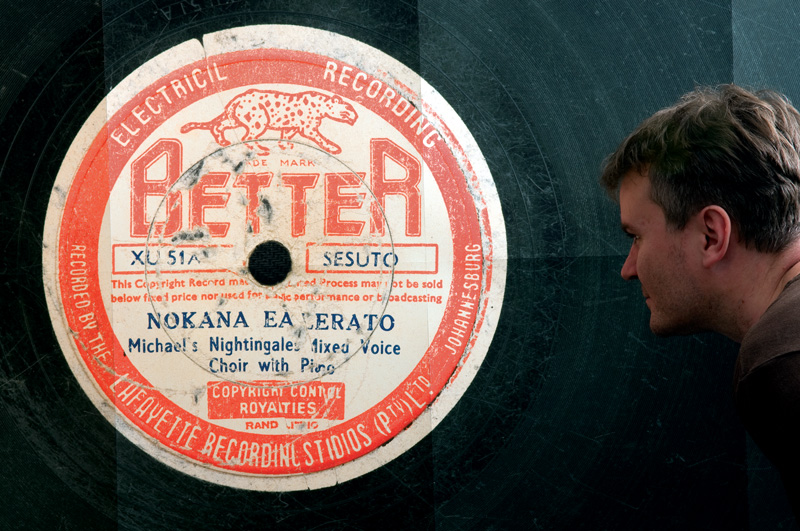

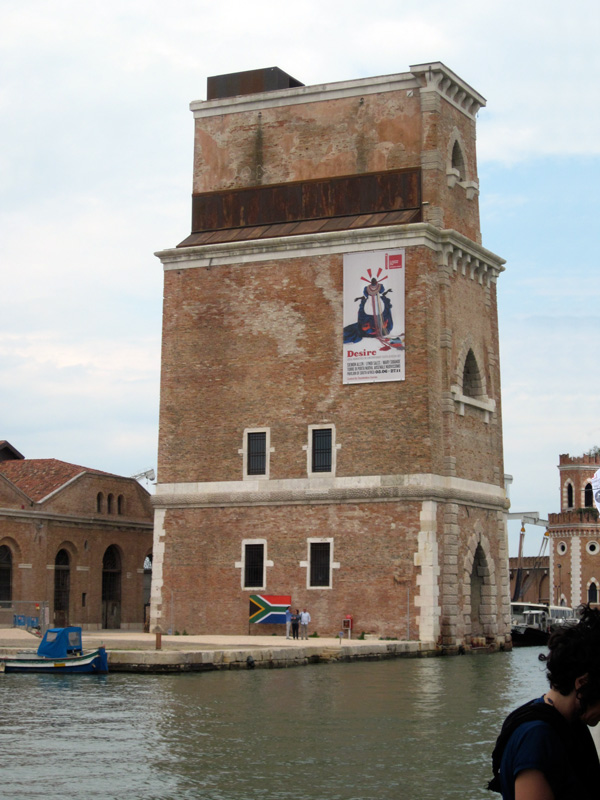
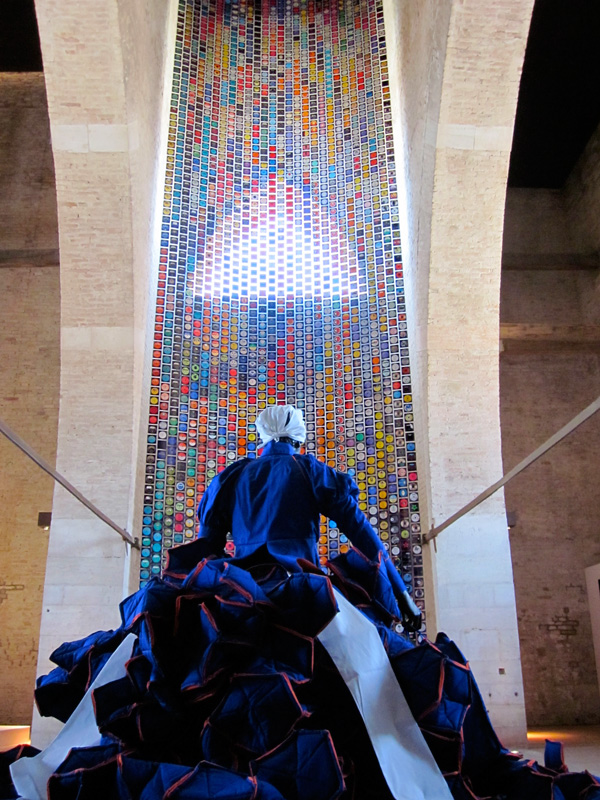
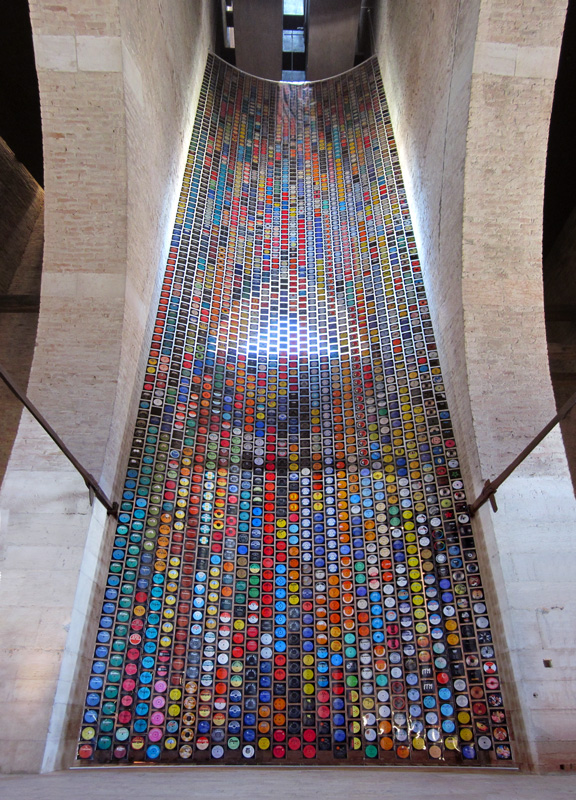
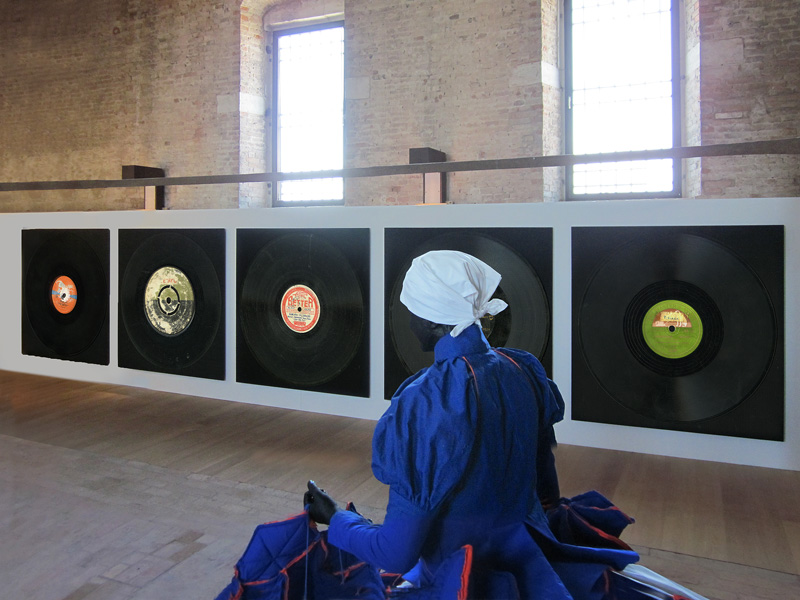
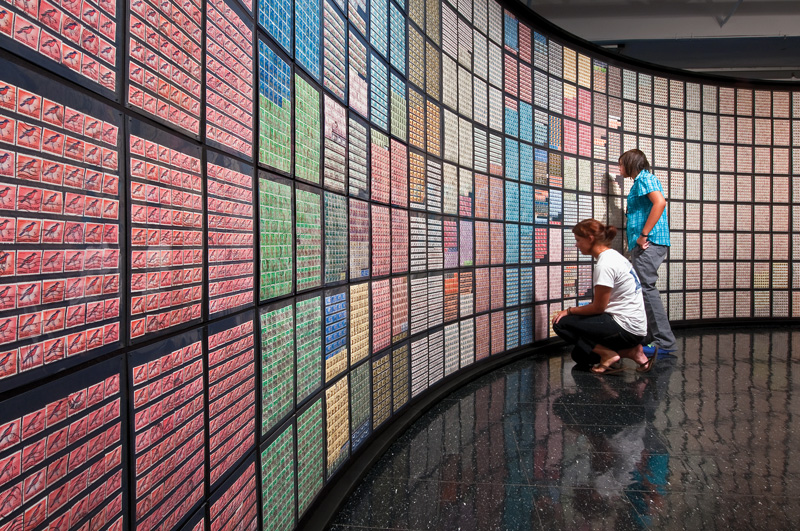
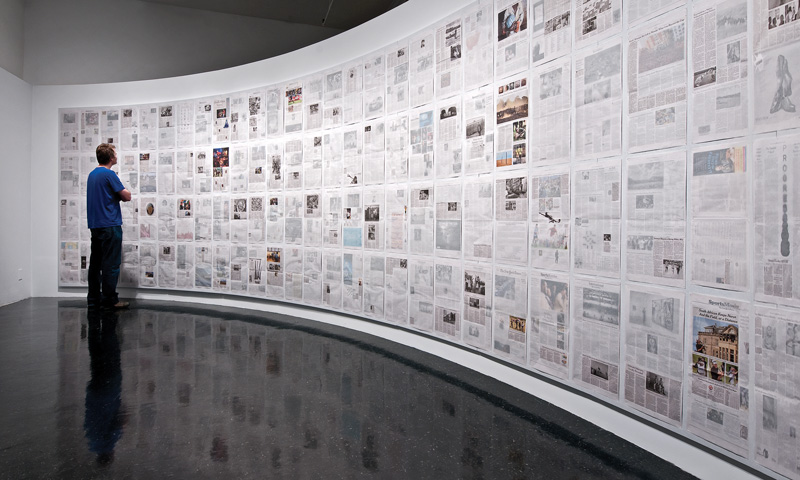
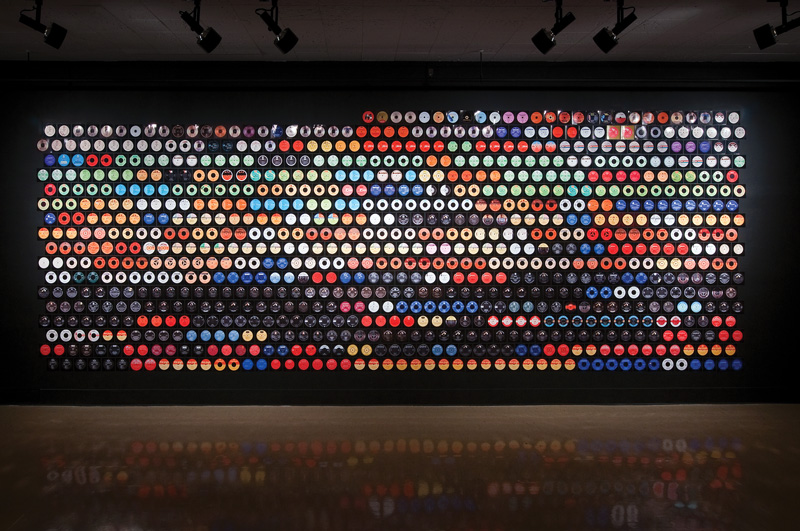

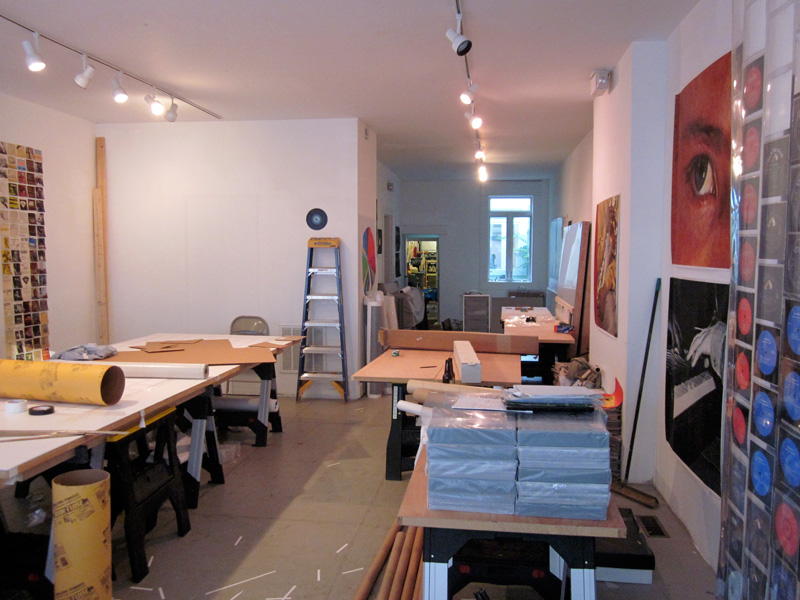





Pingback: Bibliography | 2011 Venice Exhibit